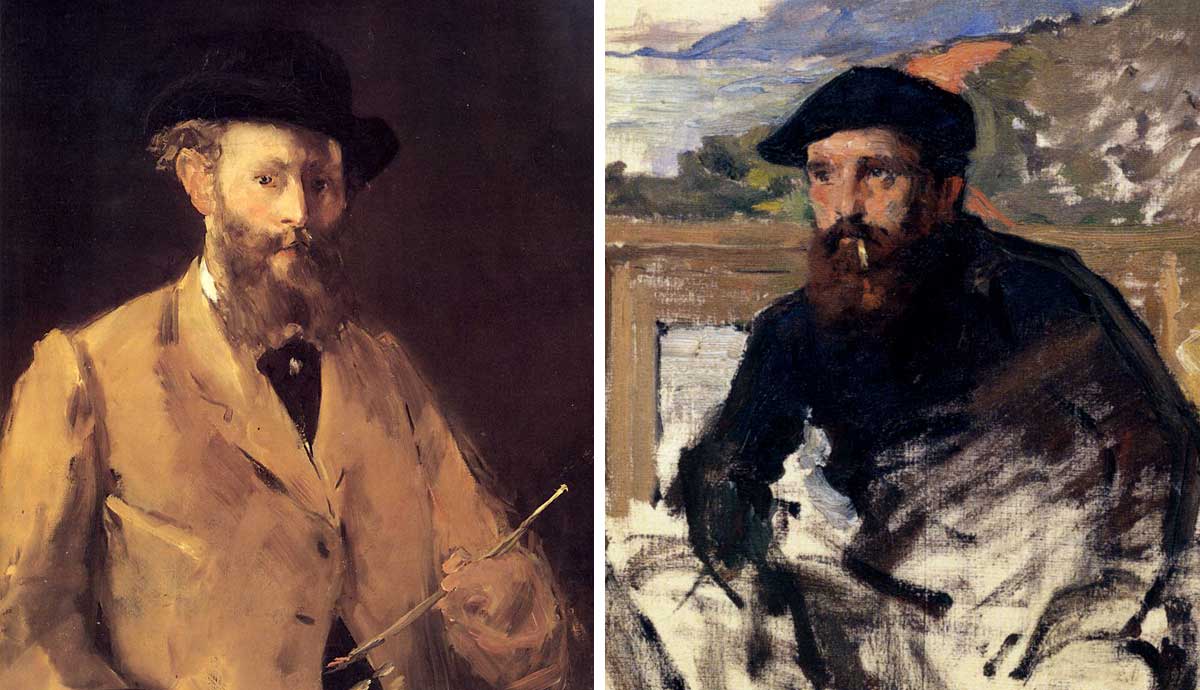
Claude Monet and Edouard Manet were both luminary figures in late 19th century art. Both came from Paris, and have remarkably similar names. And both caused ripples of shock amongst conservative Parisian audiences, but for very different reasons. Manet was the Realist who painted a shocking new kind of female nude, while Monet’s flurried, rapid brushstrokes were the epitome of Impressionism. Let’s take a closer look at the art and ideas of these very different vanguard rebels who tore up the rulebook and subsequently changed the course of art history.
1. Manet Was a Realist

Edouard Manet was primarily a Realist painter, who, along with Gustave Courbet and Jean-Francois Millet, painted gritty scenes from real, ordinary life. Their art was an act of rebellion against the Parisian Salon and its emphasis on idealized, romantic or mythological scenes. Instead, Manet painted frank, direct, and confrontational subjects from modern life, as a powerful social commentary. These ranged from shootings to battle scenes and working women. Parisian art galleries even refused to exhibit some of his artworks because they were too risqué. Manet said, “I paint what I see and not what others like to see.”
2. Monet Was an Impressionist

Monet was almost 10 years younger than Manet, and his art looked decisively different from that of Manet and the French Realists. Taking inspiration from the Barbizon School of painters, Monet painted outside directly from life (en plein air) with a distinctively swift series of brushstrokes, capturing the fleeting effects of light and weather. Art historians have widely acknowledged Monet’s painting, Impression: Sunrise, 1872, as the first ever Impressionist painting. It is from this work of art that the scathing art critic Louis Leroy invented the pejorative description ‘the Impressionists’, and the name stuck.
3. Manet Focused on People

Manet painted a wide range of subjects throughout his career, but his most celebrated works of art depict the people of modern Paris in everyday scenarios. Some of the artist’s best-known works of art portray young, working women with startling levels of honesty. These women often look out at us in a confident and direct way, reflecting the growing independence of women in late 19th century Paris. Manet’s famous painting A Bar at the Folies Bergères, 1882, is a prime example, situating a real woman at the very center of the scene as she carries out her work at the bar of the famous Parisian establishment.
4. Monet Painted Landscapes

Like Manet, Monet painted a huge variety of different subjects throughout his long and varied career, but he was primarily a landscape painter. Monet dedicated much of his life to the depiction of the natural world as it shifted through different seasons and times of day. He even painted the same subject over and over again at different times of year, as seen in his Haystack series, his Poplars, and of course the famed Water Lilies. These series’ demonstrate just how ephemeral our perception of the world around us really is.
5. Both Were influenced by Japanese Prints, but in Different Ways

Both Monet and Manet were huge admirers of the Japanese art that was being imported into Paris during the late 19th century. But each artist integrated different ideas from Japanese prints into their art, and became pioneers of the Japonisme that swept across Europe. Manet was particularly interested in the flat, black shapes, close compositions, and diagonal symmetry of Japanese art, and we can clearly see these influences in Olympia, 1863. Meanwhile, Monet introduced the Japanese floral motifs, bright colors, and cropped compositions into his most famous works of art, while his water garden at Giverny was an ode to Japanese flora, fauna, and architecture.










